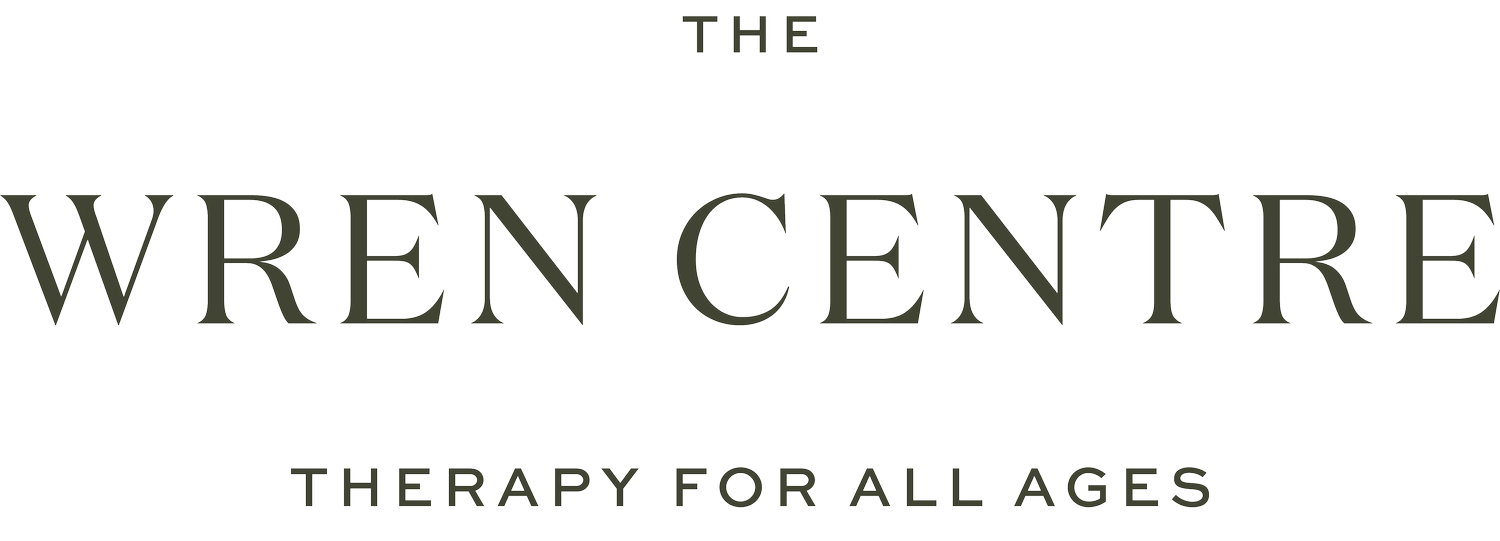When Unmasking Isn’t Safe: Rethinking Therapy Goals with Autistic Clients
There’s growing familiarity with the idea of “unmasking” in conversations about autism, especially in therapeutic spaces. If you’re unfamiliar, unmasking refers to the conscious or unconscious strategies autistic people use to socially fit in or camouflage socially less acceptable traits to avoid judgment, rejection, or harm. These behaviours may include suppressing stims, mimicking neurotypical social cues (like eye contact), or pushing through sensory discomfort to prioritize conversation/connection over personal comfort.
Unmasking is positioned as both a process and a goal
Popular psychology often paints unmasking as both a healing process and a sign of therapeutic progress - movement toward greater authenticity, acceptance and embodied self-awareness. And while it can be, this framing can also be dangerously simplistic. What if unmasking isn’t always safe? What if it’s not always the right goal?
At The Wren Centre in west Ottawa, we share Ruth Strunz’s perspective in her essential clinical text, Neurodiversity-Affirming Psychotherapy, that therapy must begin from a place of respect - not reform. Strunz challenges the subtle and not-so-subtle ways therapists may encourage autistic clients to appear more neurotypical, framing it as “growth” or “progress.” We take this reminder to heart in our work: the work of therapy is not to make someone more palatable to others, but to help them feel safer and more connected in themselves and on their own terms.
For many autistic clients, masking has been a lifelong survival strategy. Regardless of your neurotype, you can probably relate - I think we can all point to places and spaces where we have experienced unspoken pressure to represent ourselves a certain way. For folks with autism, that’s a daily pressure to avoid bullying, hold onto jobs, maintain relationships, or simply move through the world with a bit less friction. Asking a client to drop these protective adaptations without deeply understanding their function - and without safe alternatives in place - is not only unkind, it can be retraumatizing.
Therapy spaces that pressure clients to “unmask” too soon may inadvertently recreate the very dynamics that required masking in the first place. A lack of sensory accommodation, expectations for eye contact, or even overemphasis on verbal emotional disclosure can all signal that a client’s natural ways of being aren’t welcome. At best, this slows effective therapy. At worst, it erodes trust between therapist and client.
So what does autism affirming therapy look like instead?
It starts with the therapist doing their own unlearning. Many of us were trained to assess progress based on neurotypical norms: better eye contact, more expressive sharing, increased “flexibility” in routines. But what if progress looks different for an autistic client? What if it looks like less verbal processing, more sensory regulation, more ability to say “no,” or simply more comfort showing up exactly as they are?
Our neurodivergent affirming approach to therapy includes centring clients so they don’t have to spend energy translating themselves. Some autistic clients prefer more structure - reflective questionnaires ahead of therapy to can bring in and use in a predicable session framework. That might mean stimming is welcomed in session. Typing, drawing or gesturing instead of speaking. That might mean not diving into emotionally charged material until (or unless) the relationship can hold it. It means embracing relational pacing that honours the client’s nervous system, not the therapist’s timeline.
It also means taking seriously the trauma that often underlies chronic masking. As Strunz notes, many autistic people experience what she calls “prolonged epistemic trauma” - the repeated, embodied experience of having one’s inner knowing, intentions, or reality dismissed or misunderstood. It underpins the isolation and loneliness many autistic people feel, which is part of the reason they mask - to be in connection, as we all need.
When autistic clients do choose to unmask - if and when they feel ready - it should be in service of their own liberation, not others’ comfort. And it should be supported with the same care and grounding we would bring to any other vulnerable shift in self-expression.
We are all on a journey of growing self-awareness and acceptance, but we all have different plot details and twists that make our journey unique. We believe in neurodivergent affirming therapy because we believe in a relationship-based approach that promotes acceptance and uplift. Reach out if we may be of service to you.
If you would like to book a consultation to explore therapy for your child on the autism spectrum or to discover if our approach to therapy with autistic clients is right for you, please reach out below or directly book a consultation.




